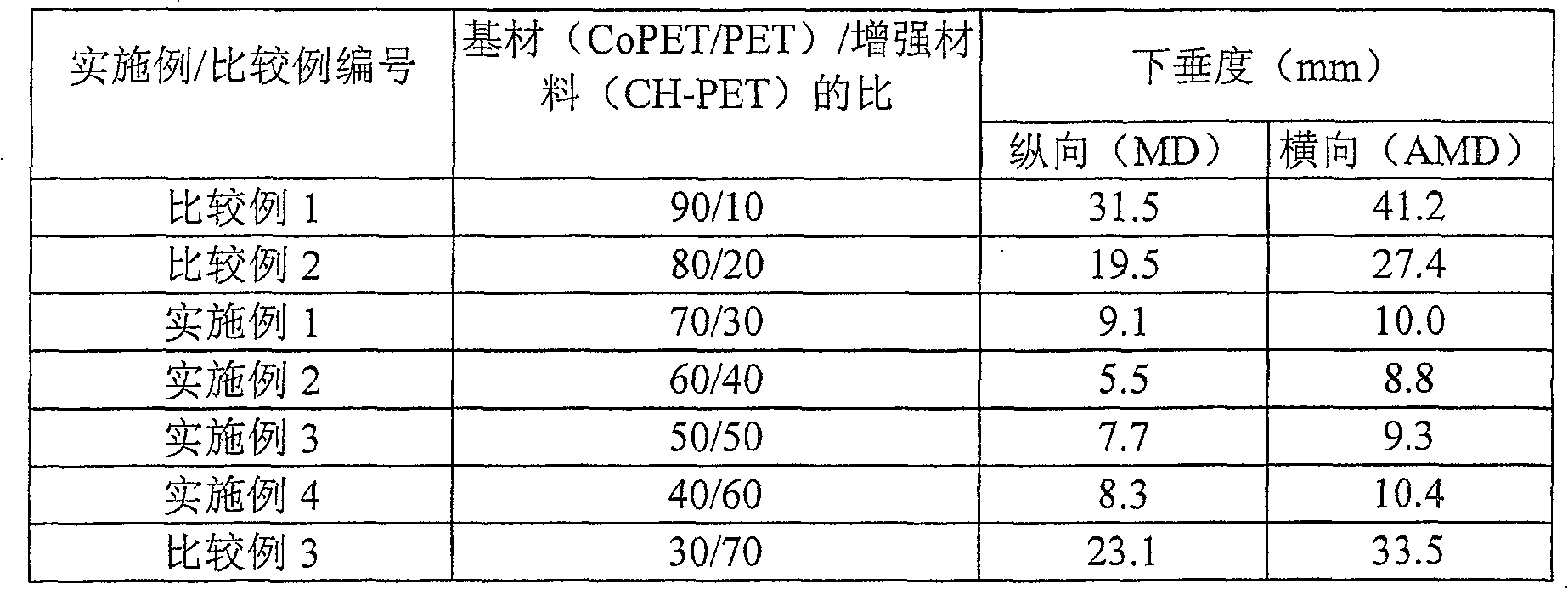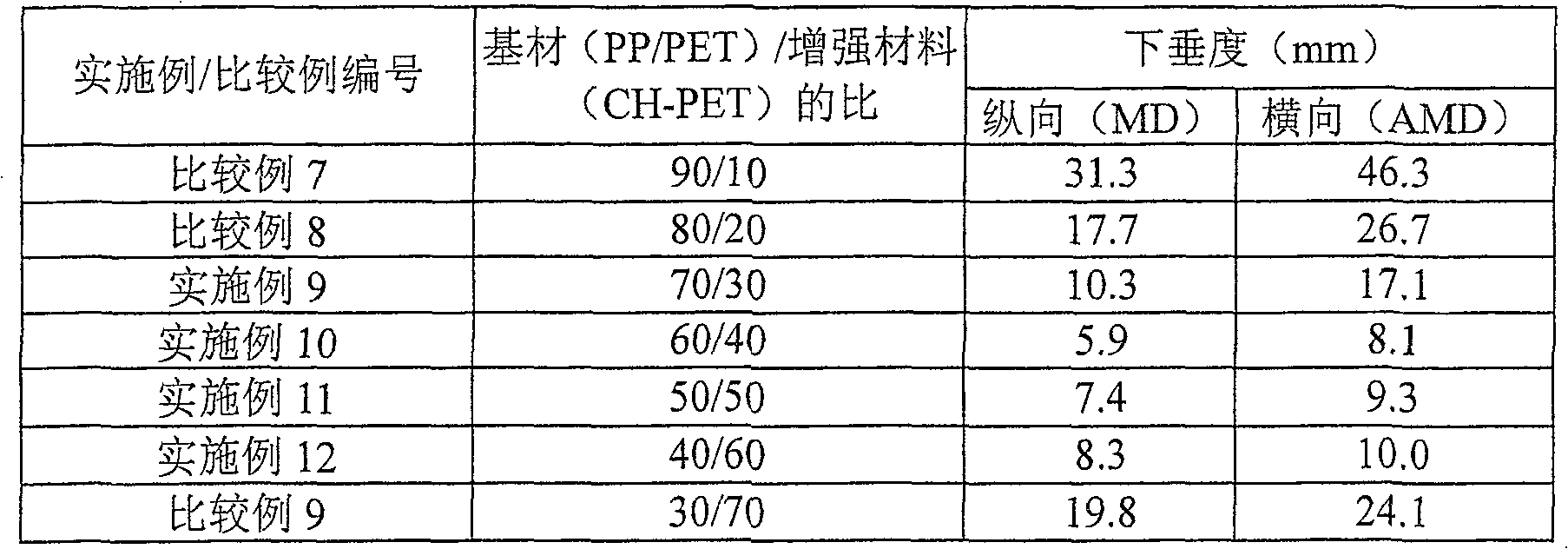Member for headliner on motor vehicles
A technology for car roofs and organic fibers, applied in vehicle parts, layered products, transportation and packaging, etc., can solve the problems of dust and noise, weight increase, crushing, etc., achieve excellent shock absorption and elasticity, improve sound absorption and thermal insulation, improving the effect of maintaining human health
- Summary
- Abstract
- Description
- Claims
- Application Information
AI Technical Summary
Problems solved by technology
Method used
Image
Examples
Embodiment 1 to Embodiment 4
[0040] The shell / core bicomponent fiber (CoPET / PET fiber; Huvis Corp.) as the base material and the conjugated hollow PET fiber (CH-PET; Huvis Corp.) / PET) to reinforcing material (CH-PET) in a weight ratio of 70 / 30 (Example 1), 60 / 40 (Example 2), 50 / 50 (Example 3) or 40 / 60 (Example 4) .
[0041] The blended fibers are passed through a cylindrical card machine to form a thin web, which is then joined together by needling, thereby producing a nonwoven fabric. The nonwoven fabric is formed directly in a mold for a car headliner. Alternatively, the nonwoven fabric can be formed into a composite sheet in a continuous type composite sheet manufacturing facility configured to perform preheating, heat bonding, pressing, A series of processes such as cooling, expansion, and cutting, and then molding the manufactured composite sheet in a mold, thereby manufacturing a weight of 1200g / m 2 , A car roof with a thickness of 6mm. The performance of the automotive headliner manufactured a...
Embodiment 5 to Embodiment 8
[0052] Car headliners were manufactured in the same manner as in Examples 1 to 4, except that a shell / core bicomponent fiber (CoPET / PET fiber; Huvis corp.) was used as a base material, and a conjugated hollow PET ( A mixture of CH-PET) fibers and double-crimped PET fibers (DC-PET fibers) was used as a reinforcing material, and the weight ratio of CoPET / PET:CH-PET:DC-PET was 60 / 35 / 5 (Example 5), 55 / 35 / 10 (Example 6), 50 / 40 / 10 (Example 7) or 50 / 20 / 30 (Example 8). Samples were prepared in the same manner as in Example 1 to Example 4, and sag was measured after 24 hours.
Embodiment 9 to Embodiment 12
[0061]Car headliners were produced in the same manner as in Examples 1 to 4, except that a shell / core bicomponent fiber (PP / PET fiber; Huvis Corp.) was used as a base material, and a conjugated hollow fiber ( CH-PET fiber; Huvis Corp.) as reinforcement, and the weight ratio of substrate (PP / PET) to reinforcement (CH-PET) was 70 / 30 (Example 9), 60 / 40 (Example 10) , 50 / 50 (Example 11) or 40 / 60 (Example 12). Samples were prepared in the same manner as in Example 1 to Example 4, and sag was measured after 24 hours.
PUM
| Property | Measurement | Unit |
|---|---|---|
| melting point | aaaaa | aaaaa |
| melting point | aaaaa | aaaaa |
| melting point | aaaaa | aaaaa |
Abstract
Description
Claims
Application Information
 Login to View More
Login to View More - R&D
- Intellectual Property
- Life Sciences
- Materials
- Tech Scout
- Unparalleled Data Quality
- Higher Quality Content
- 60% Fewer Hallucinations
Browse by: Latest US Patents, China's latest patents, Technical Efficacy Thesaurus, Application Domain, Technology Topic, Popular Technical Reports.
© 2025 PatSnap. All rights reserved.Legal|Privacy policy|Modern Slavery Act Transparency Statement|Sitemap|About US| Contact US: help@patsnap.com



